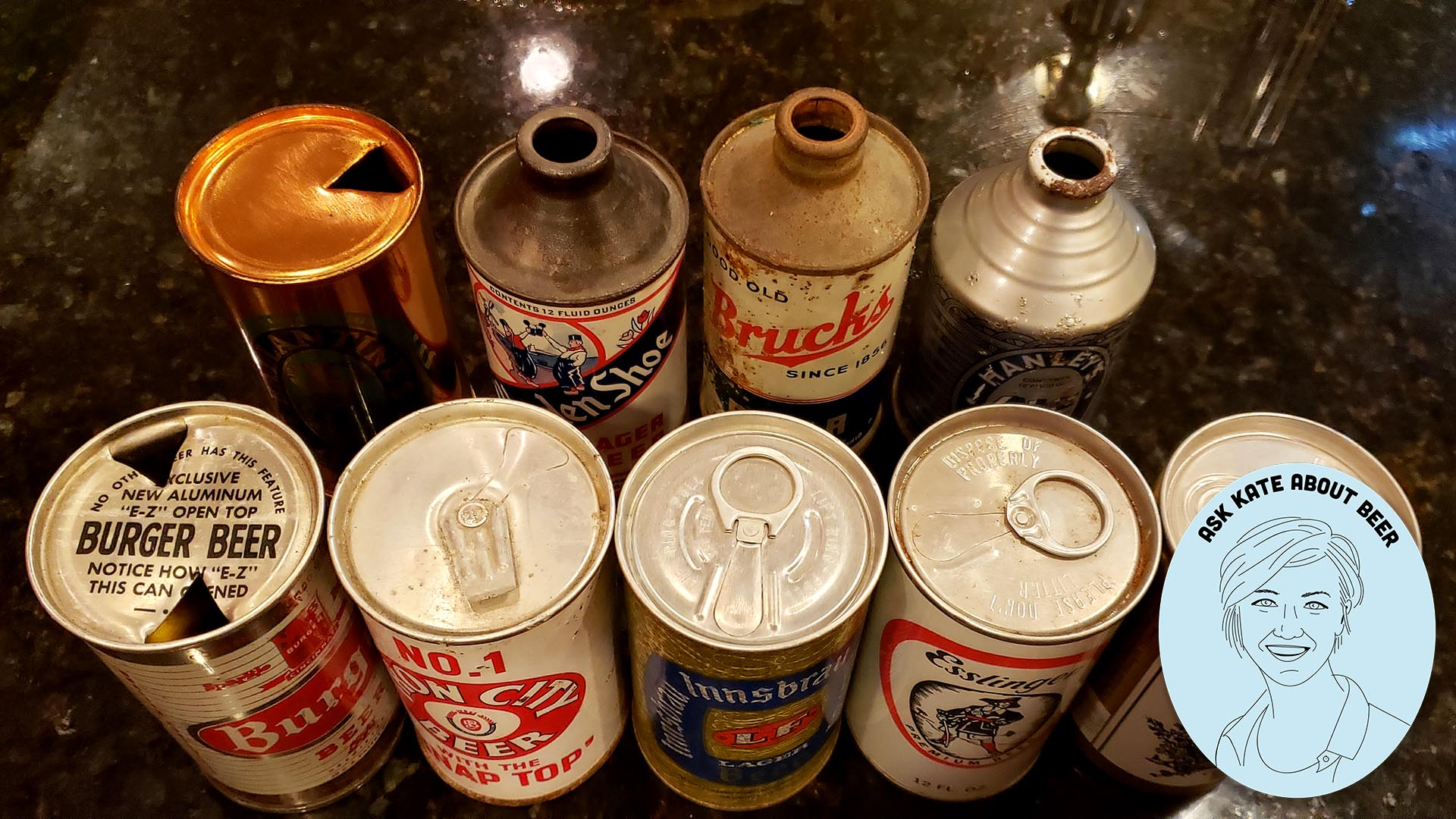Ask Kate About Beer: When And Why Did Breweries Stop Using Pop-Top Cans?
We may receive a commission on purchases made from links.
Welcome to Ask Kate About Beer, in which The Takeout's resident beer expert answers everything you've ever wanted to know about beer but were too drunk to ask. Have a question? Shoot it to beer@thetakeout.com
Hey Kate, Recently when I was out hiking, I found an old rusty beer can with a pull-tab. I'm curious how old it is. When did breweries stop using these? And why?
Thanks,Kenny
Hey Kenny,
I can't resist a beer question that lets me do a bit of historical digging.
Beer and soda cans have gone through three major stages in the U.S. The first earliest beer cans, which debuted in 1935, sported a flat top that required a tool called a church key to open. This design had an obvious drawback: You needed to have the key—or some creativity—to open your can. Some breweries experimented with cone-top cans that could be opened with a standard bottle opener rather than a church key, but again, you had to have a tool on hand to get inside your can. The cone-top cans began to fall out of favor in the 1950s and were largely out of use by 1960. At this time, beer was still overwhelmingly consumed on draft or in bottles; only a quarter of beer in the U.S. was consumed in cans in 1953, according to Beer Can Collecting: America's Fastest Growing Hobby.
By 1963, a Dayton, Ohio man named Ernie Fraze thought he had a better idea. He invented and patented the pull-tab beer can, the type you found. The can had a built-in tab that eliminated the need for a tool, a big improvement in terms of convenience. But the tabs and rings had their drawbacks, too.
"You could cut your finger badly on them. The tab, which was then replaced by a ring, would sometimes pull off and leave you with this sharp jagged piece of metal sticking up," Dr. Mark Benbow, a beer-can collector and a history professor at Marymount University, tells The Takeout. "The very first ones were known as 'finger rippers'."
Discarding the metal rings polluted forests and beaches—Jimmy Buffett bemoans this in his song Margaritaville ("I blew out my flip flop/Stepped on a pop top/Cut my heel had to cruise on back home")—and posed a choking hazard.
Again, the industry innovated. In 1975, the Reynolds Metals Co. patented the StaTab, the can opening we still see on beer and soda cans today. Instead of ripping off, the tab stayed afixed to the can, saving litter and eliminating choking hazards. Benbow says they caught on quickly, and by 1980, most breweries had completely switched from pop-top cans to StaTabs.
So, long story short, if you found a pop-top or pull-tab beer can, Benbow says you can safely assume it was made between 1963 and 1980. If you want more specific info, you'll have to bring it to a collector or check the tour dates for Antiques Roadshow.
